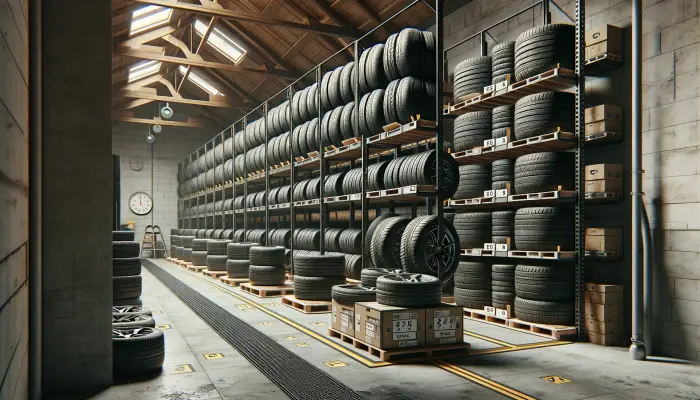Proper care of car tires during the interseasonal period is crucial for extending their service life. Given the challenging conditions on Ukrainian roads, adherence to tire storage recommendations becomes even more relevant. Let's explore the steps necessary for proper tire storage:
Cleaning Tires Before Storage
Before storing tires, it is essential to thoroughly clean them. Use a stiff brush and plain water to remove dirt and small stones. Pay special attention to the inside of the tires. After cleaning, allow the tires to dry properly, avoiding direct sunlight or the use of a hairdryer.
Inspection and Care of Tires
Inspect the tires for cracks, bulges, or tread wear. Address defects as needed. It is also advisable to treat the tires with a special conditioner containing wax or silicone to prevent them from drying out.
Packaging Tires
After cleaning and inspecting, pack each tire in an individual bag or trash bag. Avoid moisture entry and remove excess air from the bag before sealing it tightly.
Choosing a Storage Location for Tires
Select a dry location for tire storage, protected from direct sunlight and temperature fluctuations. A garage or basement with moderate temperature and humidity is ideal.
Methods of Storing Tires
The best method of storage is to place tires vertically on a rack or pallet. If stacking tires, avoid high stacks to prevent deformation.
Tire Marking Tips
For convenience and efficiency in subsequent installations, it is useful to mark the tires. Use a marker or special stickers to indicate the location of each tire on the vehicle (e.g., FL - front left, RR - rear right). This ensures even wear and simplifies installation in the next season.
Checking and Adjusting Tire Pressure
Before storing tires, check and, if necessary, adjust the air pressure. Tires should be inflated according to the manufacturer's recommendations. Incorrect pressure can lead to deformation and accelerated tire wear during storage.
Special Considerations for Studded Tires
Studded winter tires require special attention during storage. It is best to store them vertically to prevent the studs from falling out and maintaining their integrity. Also, ensure dryness and protection from direct sunlight.
Shelf Life of Tires
The shelf life of tires is limited. Even if tires have not been used, it is recommended not to store them for more than five years from the date of manufacture. Over time, the properties of the rubber deteriorate, which can negatively affect safety and vehicle handling.
These additional measures and recommendations will help ensure proper tire storage and longevity, as well as reduce the risk of safety issues during operation.
